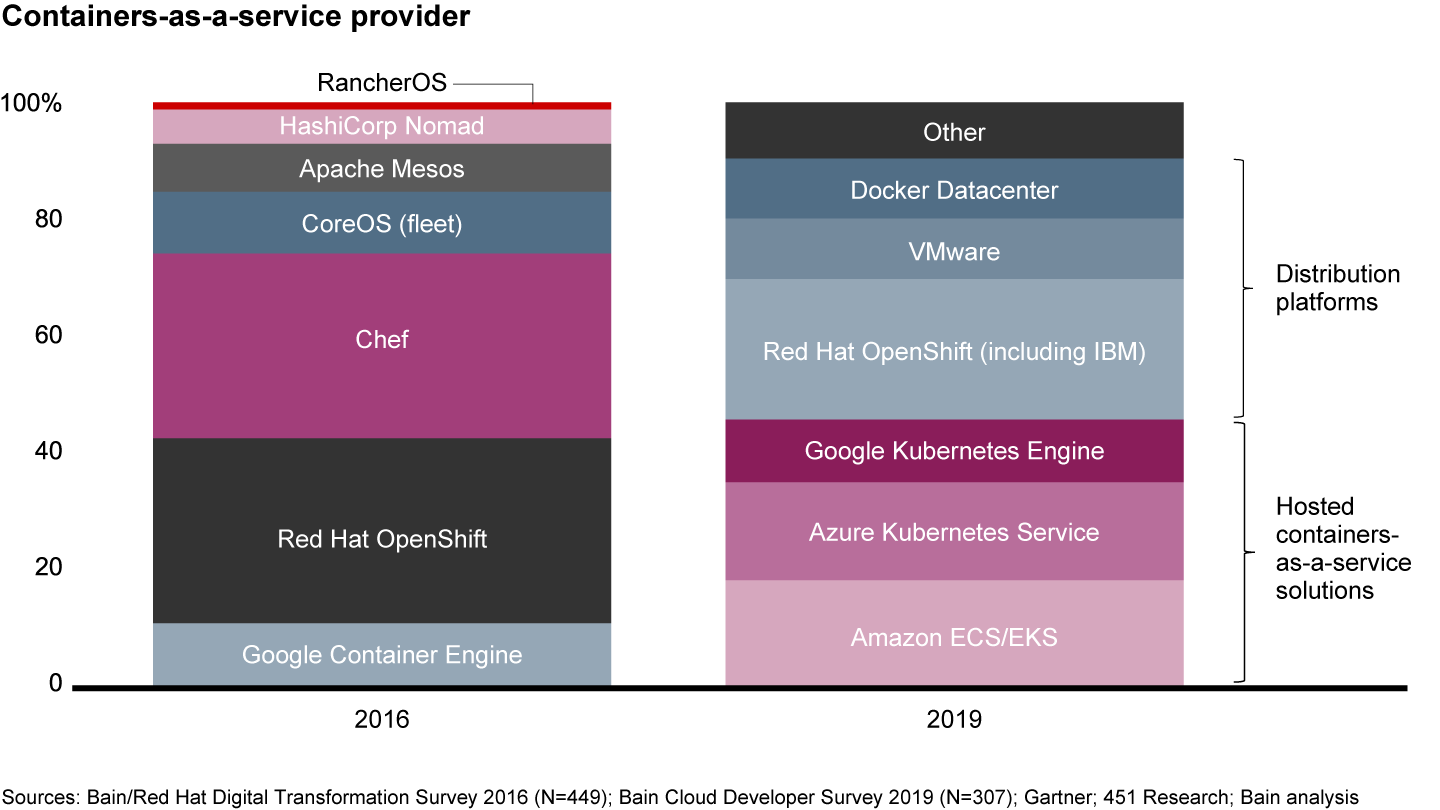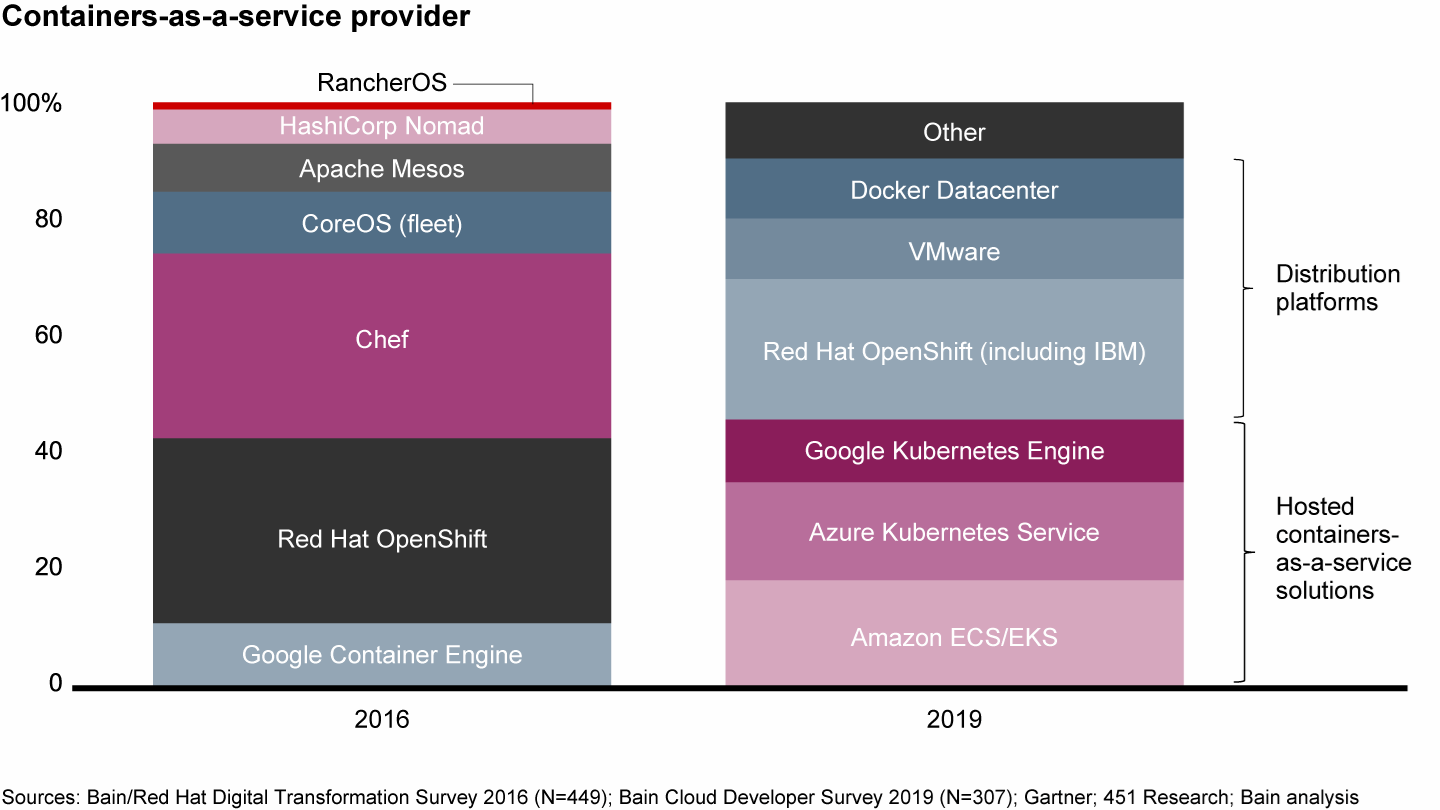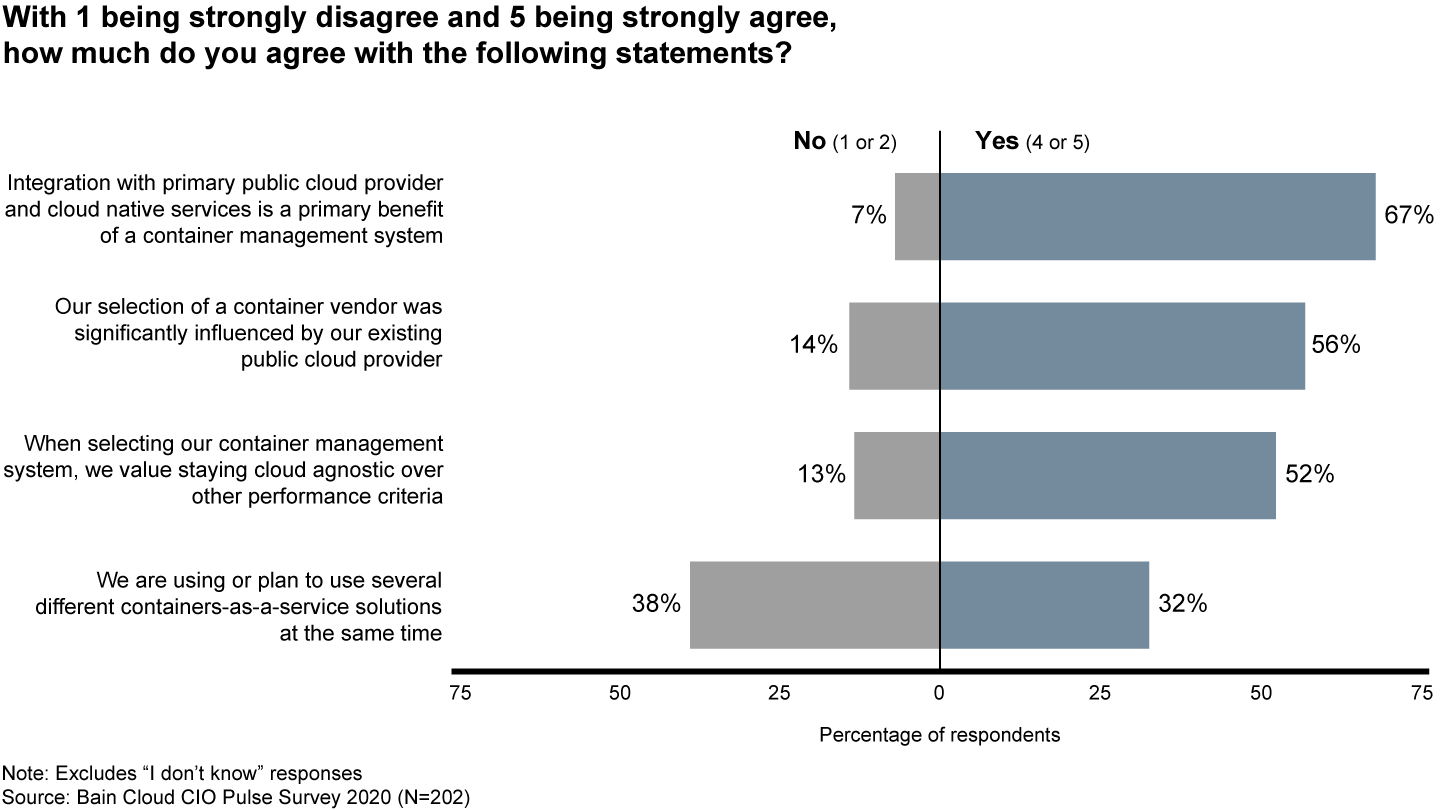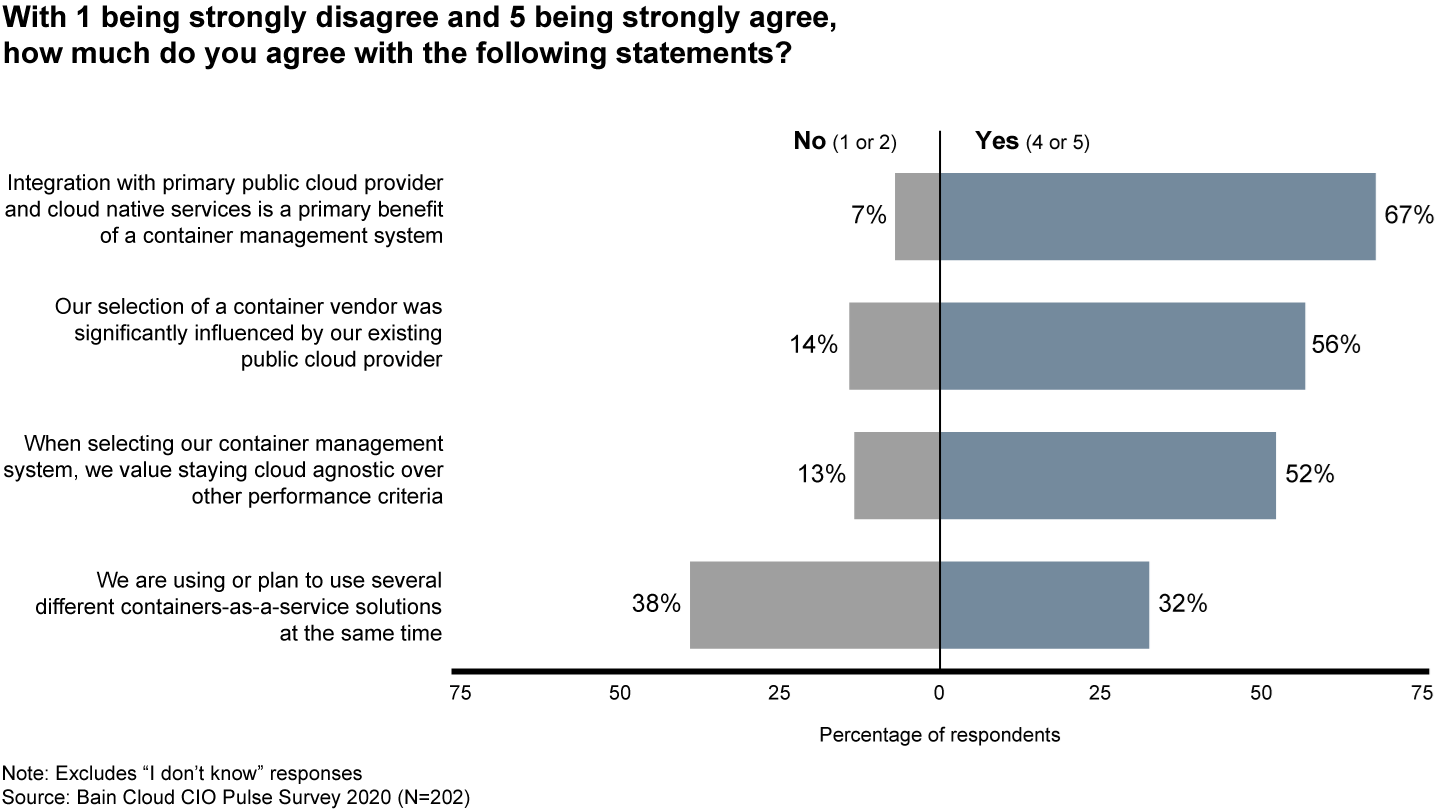Artikel

This is the ninth in a series of posts on the enterprise cloud market—its economics, customer segments and the opportunities for technology providers.
The $500 million market for containers as a service (CaaS) is growing rapidly, by about 35% annually, and it’s expected to rise to $1 billion by 2024.
That should be good news for the vendors who built the container market. But growth carries risks: The success of containers has drawn the large cloud service providers (CSPs) into the mix, and the top three CSPs have expanded their share of the container management market from about 10% in 2016 to 45% in 2019, dramatically changing the competitive landscape (see Figure 1).
Since 2016, the containers-as-a-service market has shifted to solutions from distribution platforms and cloud service providers


This shift is not surprising when you consider that about 70% of chief information officers (CIOs) say that they consider integration with their primary public cloud provider as a main benefit of CaaS (see Figure 2). So it stands to reason that their container purchases often have followed their other cloud decisions. Nearly as many (60%) say that their selection of a CaaS vendor was influenced significantly by their choice of public cloud provider.
Many chief information officers decide on their container management solution based on their primary public cloud provider


At the same time, about half of CIOs say that they want to avoid vendor lock-in and maintain their ability to make purchases based on price. But the preference to remain cloud agnostic doesn’t necessarily carry over into buying decisions. Most companies end up with a single public cloud vendor, and even among those that manage to maintain a multivendor environment, one vendor typically takes most of the prize (see the Bain Snap Chart “CIOs Say They Want to Avoid Vendor Lock-In, but Most Are Pretty Close to It”).
These findings suggest that a company’s decisions about infrastructure will also shape its CaaS strategy. That may have been less true a few years ago when most companies operated their private and public cloud environments separately. In that market, independent CaaS providers such as Red Hat, Chef Container and CoreOS held most of the market. Now, ease of use appears to be winning the day—that is, except for customers with exceptional needs that may lead them to seek out the capabilities of CaaS vendors beyond the big CSPs.
Those vendors should be asking themselves several questions that can help them clarify their value proposition and understand their options.
- What are the key purchase criteria for the customers you’re targeting, and do they align with your value proposition?
- What adjacent profit pools are you expecting container orchestration to give you an advantage in?
- How are you using container orchestration as a control point? Does your container solution create competitive advantages in other markets?